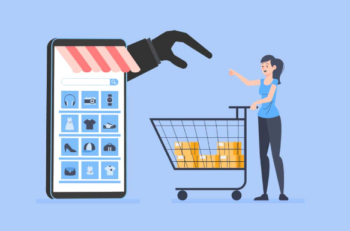
To safeguard consumers, the government has prohibited the use of “dark patterns” on online shopping websites. These are tactics that try to fool customers or influence their choices. The Central Consumer Protection Authority (CCPA) issued guidelines called “Guidelines for prevention and regulation of dark patterns” on November 30. These rules apply to all platforms offering goods and services in India, including advertisers and sellers.
Using dark patterns will be considered as false advertising or unfair trade practices, breaking consumer rights. Penalties will be enforced under the Consumer Protection Act.
Rohit Kumar Singh, the Consumer Affairs Secretary, said, “In the growing digital market, platforms are increasingly using dark patterns to mislead consumers by influencing their buying decisions and behavior.”
The guidelines aim to make things clear for everyone involved – buyers, sellers, marketplaces, and regulators. They outline what is not acceptable as unfair trading practices, with violators facing consequences under the Consumer Protection Act.
The notification defines dark patterns as any tricky design or practice on a website that tries to mislead or trick users into doing something they didn’t plan to do. This undermines the freedom and choices of consumers in making decisions.
The Indian government’s decision to prohibit the use of “dark patterns” on online shopping websites is a welcome step towards protecting consumers and promoting fair business practices.
Dark patterns are deceptive design elements that are intentionally used to manipulate users into making decisions that they may not have otherwise made.
Examples of dark patterns include:
- Hiding important information in hard-to-find places
- Using confusing or misleading language
- Creating a sense of urgency or scarcity
- Making it difficult to cancel unwanted subscriptions or services
These tactics can be used to trick consumers into spending more money, signing up for unwanted services, or providing personal information.
The Indian government’s new guidelines are designed to prevent the use of dark patterns by requiring e-commerce companies to:
- Be transparent and upfront about their pricing and terms of service
- Make it easy for consumers to compare prices and products
- Allow consumers to easily cancel unwanted subscriptions or services
The guidelines also prohibit companies from using certain specific dark patterns, such as:
- Using countdown timers to create a sense of urgency
- Pre-checking boxes for optional services
- Making it difficult to find the “cancel” button
The Indian government’s decision to prohibit dark patterns is a positive step forward for consumer protection in India. By banning these deceptive tactics, the government is helping to ensure that consumers are able to make informed decisions about their online purchases.
Here are some additional benefits of the Indian government’s decision to prohibit dark patterns:
- Increased consumer trust in e-commerce
- Reduced consumer harm
- More level playing field for e-commerce businesses
Some tricky things that online shops sometimes do:
- Hidden costs: They add extra charges, like shipping or taxes, during checkout without telling you upfront.
- Urgency tactics: They create a sense of urgency, like saying there’s a limited-time offer, to make you buy quickly without thinking.
- Social proof: They show fake customer reviews to make you think a product is better than it really is.
- Auto-enrollment: They sign you up for things without asking, leading to unexpected charges.
- Confusing navigation: They make it hard for you to find what you need or finish buying something, causing frustration.
- Pre-checked boxes: They automatically select extra things for you to buy, hoping you won’t notice.
- Limited options: They give you only a few choices, usually favoring more expensive ones.
- Bait-and-switch: They advertise something at a good price but switch it to something more expensive when you’re about to buy.
- Fear of missing out (FOMO): They make you feel like you’ll miss out on something good if you don’t buy quickly.
- Complex pricing: They make prices confusing with hidden fees or differences based on things like where you live or what you bought before.
Dark Patterns in Online Shopping: Unveiling the Deceptive Tactics









